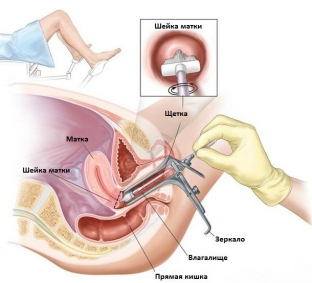As you know, visiting a gynecologist is mandatory at least once a year for every woman of reproductive age. During preventive examinations, women undergo a bimanual gynecological examination, bacterioscopic examination, examination and palpation of the mammary glands. Often, this amount of research is enough to make sure that there is no pathology in young women. If there is any doubt, an additional volume of diagnostic measures is carried out. One of such studies is colpocytology – a simple and accessible method of functional diagnostics.
What is colpocytology and what is the purpose of this study
Colpocytology - this is a simple diagnostic method that allows you to assess the state of the hormonal background of a woman. The material for the study is vaginal discharge, which the doctor receives during the examination of a woman on a gynecological chair using various tools: tweezers, spatula, Papanicolaou pipettes, and so on. The method is based on the fact that the hormones of the female body, which are produced by the ovaries, cause cyclic changes in the vaginal mucosa. Through the assessment of vaginal smears, one can judge the state of the hormonal background of a woman.
Colpocytology:
- how is colpocytology performed: sampling and preparation of material for research;
- evaluation of colpocytology results: types of smear reaction;
- assessment of the physical qualities of the discharge and vaginal mucosa.
How is colpocytology performed: sampling and preparation of material for research
Colpocytology material should be collected prior to bimanual examination and vaginal manipulations, as this may affect the reliability of the results obtained. Since discharge accumulates in the back of the vaginal fornix and can be quite old, fresh material is taken from the lateral parts of the fornix. The secretions are applied in a thin even ball to a glass slide, after which the material is stained using polychrome staining methods, and studied under a light microscope. To obtain reliable results, smears are taken after one or several days – 10-15 strokes.

Assessment of colpocytology results: types of smear reactions
To determine the hormonal balance of the female body through colpocytology, special cytological tests have been developed, the interpretation of which is based on the assessment of cellular elements in the obtained smears, as well as their quantitative ratio. There are four types of reaction of cytological smears:
- deep reaction type – the smear consists of cells of the deepest layers of the epithelium, as well as leukocytes, which indicates a sharp estrogen deficiency;
- mixed-deep reaction type – in the smear there are a large number of basal and intermediate cells, a lot of leukocytes, which indicates a pronounced estrogen deficiency;
- medium mixed type – intermediate cells predominate, there are few leukocytes, basal and parabasal cells are single. This picture is typical for moderate estrogen deficiency;
- surface reaction type – there are many keratinizing cells in smears, there are no basal cells, leukocytes are single or absent. This type of smear is typical for a high concentration of estrogens in a woman's body.
For healthy women, the fourth type of smears in the follicular phase of the cycle is characteristic, and the third type – to luteal.
Assessment of the physical qualities of vaginal secretions and mucous membranes
Colpocytology allows you to determine the hormonal background of a woman by assessing the physical qualities of the vaginal mucosa and vaginal discharge. Depending on the hormonal saturation of the body, three characteristic states are distinguished:
- symptom of the shiny mucous membrane: characteristic of the complete absence or severe deficiency of estrogen in the body of a woman. At the same time, the vaginal mucosa is thin, shiny, the discharge is transparent and dries quickly on a glass slide;
- symptom of granular discharge: characteristic of moderate or slight estrogen deficiency, that is, it corresponds to type 2 and 3 cytological reactions. Fine granularity is observed in the precipitates deposited on the glass. There are many of them, the consistency and color resemble sour milk;
- symptom of hoarfrost: vaginal mucosa whitish, as if powdered. There are a lot of secretions, they resemble semolina or frost, it is difficult to evenly apply them on a glass slide, as lumps remain. This picture corresponds to the 4th type of reaction and indicates a significant saturation of the body with estrogens.







Add a comment